3GSM 2004
Feb 23, 2004, 7:00 PM by Rich Brome
Live reports posted daily from the 3GSM World Congress event in Cannes, France. The first hands-on reports of the Nokia 9500, Panasonic X700, Motorola MPx, the new Danger Hiptop, and more.
Day 1
Nokia 9500
3GSM kicked off with a bang Monday in Cannes, with Nokia's unveiling of the 9500 - the company's new ultra-high-end business phone. The highly-anticipated device continues the successful Communicator series, after an extended delay since the last model.
The 9500 is one of the first triple-radio devices to be announced. The three radios are GSM, Bluetooth, and Wi-Fi. The GSM side is tri-band, and also includes EDGE for high-speed data. The 9500 will be available in two tri-band versions: one 900/1800/1900 for Europe, and one 850/1800/1900 for the Americas.
Like previous Communicators, the 9500 features a "sideways" clamshell design that opens to reveal a full QWERTY keyboard and large, wide display. The keyboards in the Communicator series are much larger than the typical "thumboards" found in some competing models from other companies. While quite cramped, it is possible to type on a 9500 keyboard using your fingers.
Another hallmark feature of the Communicator series is the ability to use primary phone functions while closed, using an external display and keypad. The 9500 adds significantly to this by stepping up to a large 65,000-color display, and adding a complete Series 40 interface. Advanced functions such as the camera and even e-mail can be accesed in this mode.
In contrast to other recent Nokia smartphones, the 9500 features a hot-swappable MMC card slot. The battery cover must be removed to access it, but the battery itself can remain in place.
Rounding out the feature set is a user-changeable front/outer cover. While it might seem out of place on a business phone, Nokia market research indicated that business users wanted to customize their phones just as much as other consumers.
Below are a few screenshots showing parts of the main Series 80 interface:
LG
At one of their smaller booths, LG was showing off a very interesting phone I hadn't seen before - the L1200 for the U.S. This tri-band GSM (850/1800/1900) camera phone sports a solid feature set in a small - and suprisingly lightweight - design.
The display is a now-typical 65,000-color TFT affair with 128 x 160 pixel resolution. The clamshell design includes an external display and a stub antenna. A VGA camera, MIDP 2.0 Java, MMS, and 40-chord polyphonic ringtones round out the feature set.
Naturally, the logo in the photos might be a clue as to who will offer this model...
Also on display was the L1100, for the European market. It appears to have the same exact feature set as the L1200. The only differences appear to be the styling and the frequency bands it supports.
Siemens
I was able to meet with Clemens Jargon, Senior Vice President & General Manger for Global Product Management at Siemens.
One of Siemens' main areas of focus and strength is design. The company takes pride in the distinctive, sleek styling of its phones. Its two newest models - the CX65 and CF62 - are no exception.
The CX65 is the higher-end of the two new phones. This model marks the beginning of a whole new class of phones for Siemens; we can expect additional "CX" models in the future.
Distinguishing features include an extra-large display and a camera with video recording capability. Since the CX65 is designed to be a high-end (more expensive) model, the company opted for the highest quality display and camera components. In my brief hands-on time with the phone, I was quite impressed with quality of both. Colors were exceptionally vibrant in both cases.
The CX65 has a good, solid feel to it. Particularly impressive is the thickness - or rather, the lack thereof. It's definitely a phone that will fit comfortably in any pocket.
The other model introduced recently is the CF62. This striking clamshell phone features a "loop" antenna, similar to the Sony Ericsson Z200. The phone is quite small and very light. Value is the key word with this model - it's designed to bring a clamshell form factor and color display to a more affordable price point than competing models.
One unique feature of the CF62 not widely publicized is the lights that surround the keypad - three on each side. While they only light up in one color, the flashing pattern can be customized.
Finally, I asked Mr. Jargon about Siemens' plans regarding current technology trends. As for PTT, I was told to expect several models in the 2nd half of the year. Also coming in the back half of the year will be at least one megapixel camera model - a high-end business-oriented phone.
I also asked about quad-band. It's something Siemens is actively working on, and will definitely bring to its lineup, although Mr. Jargon declined to give a specific timeframe. On the topic of EDGE, the answer was even more vague - the company will develop EDGE phones when its carrier customers demand it.
Day 2
Panasonic X700
After many months of Panasonic publicly announcing its committment to Symbian and Series 60, but not having a phone to back it up, the company this week finally introduced its first Series 60 smartphone - the X700.
As the model number might imply, the design is heavily inspired by the X70. The X700 is larger, although that is necessary for the extra keys and larger display. The extra room on the display is really necessary on a smartphone device such as this. Fortunately, the X700 retains the stunning thinness of the X70, making the X700 one of the most compact Series 60 devices to date.
The transflective inner display is excellent in all lighting situations. However, the STN outer display quality - at least in the pre-release model shown here - is a bit disappointing. It's perfectly fine for caller-ID and basic functions, but photos lack color, and substantial lag and blurring reduce the usefullness as a camera viewfinder for self-portraits. That is probably my only complaint, however. The device is excellent in all other areas.
The X700 is one of the first devices outside of Japan to include a miniSD card slot (the new Motorola MPx100 also has one). This contributes to the slim form factor, while permitting generous memory expansion. 1GB miniSD cards are expected by the end of the year, which the X700 will support.
The X700 will come with 16MB of built-in memory, and is tentatively planned to ship bundled with a 32MB miniSD card.
One common complaint about the X70 was the underwhelming CIF-resolution camera. Fortunately, the X700 includes a VGA-resolution camera. Video recording is also supported, although only up to the maximum size of an MMS, meaning about 15 seconds typically.
Motorola
Although some leaked photos last week ruined the surprise, one of the most dramatic announcements at 3GSM this year was still the new MPx and MPx100 from Motorola. Together, they mark the expansion of Motorola's smartphone efforts to a whole lineup, as well as a serious commitment to the Microsoft Windows Mobile platform.
The MPx is a ground-breaking device on several levels. First and most obvious is the unique dual-hinge design. This allows the phone to be opened like a typical clamshell phone for voice use, but also opened "sideways" to use the QWERTY thumb-board, which also puts the display in landscape mode. A special release button on the hinge allows the phone to open sideways. The button is positioned such that the hinge can easily be released and opened in one quick motion.
The MPx runs the Pocket PC variant of Windows Mobile, and operates as a full Pocket PC device regardless of which way the hinge has been opened. The current 2003 version of the OS does not support landscape mode natively, which prompted me to ask a Motorola spokesperson how the MPx supports this feature. I was told that the MPx "takes advantage of future capabilities" of the OS, implying that it uses the new, as-yet-unannounced 2004 version.
Another ground-breaking feature of the MPx is the inclusion of "triple radios" - GSM, Wi-Fi, and Bluetooth. This is something that CEOs have been predicting and talking about in keynote speeches for over a year, and now the first products have finally been announced. The Nokia 9500 also has triple radios. Of course, it's not quite here yet - both the 9500 and the MPx are not expected to be available until the 2nd half of the year, which, in marketing-speak, often means the end of the year.
As with all Windows Mobile for Pocket PC devices, a touchscreen and stylus permit enable handwriting recognition, and an SD/MMC card slot provides generous memory expansion capability.
A 1.3 megapixel camera and color display grace the outside of the device. The camera also has a flash, and the display is accompanied by three soft keys, which enable functions such as navigating MP3 playlists.
The MPx100 is the other Windows Mobile device introduced by Motorola at 3GSM this week. Like the MPx200 already on the market, the MPx100 runs the Smartphone variant of Windows Mobile. Despite the model number, the MPx100 is hardly a "lower" model compared to the MPx200 - in fact, quite the opposite.
A common complaint about the MPx200 was the lack of Bluetooth and a camera. The MPx100 not only adds both, but sports an impressive 1.3 megapixel camera with flash.
The MPx100 also has a miniSD card slot, allowing ample memory expansion for megapixel photos, videos, and MP3s. The Pansonic X700 is another smartphone announced at the show with such a slot. The miniSD format is already becoming common in Japan. Combine that fact with the news of these two models, plus the significant momentum behind the backward-compatible SD format, and it seems likely that miniSD will soon become the dominant memory card format for advanced phones.
NEC
NEC was showing off a slew of new GSM phones at 3GSM this year, including two new tri-band models. The N331i and N400i are officially both targeted at the European market, but hopefully with sufficient demand there will be imports available for the U.S. market.
The N331i is a fairly average clamshell camera phone. The main display is of the 65,000-color TFT variety, with 128 x 160 pixel resolution. The external display is monochrome, but features a 12-color backlight.
The integrated CIF camera includes a flash, plus multi-shot and self-timer features. 2MB of memory is available for storing photos. The N331i was recently released in France.
The N400i is the higher-end of the two phones. It features a stunning QVGA display (240 x 320 pixels) supporting 65,000 colors. The outer display also supports 65,000 colors.
The VGA camera features a flash and also video recording - in MPEG-4 format. 4MB of memory is available. Java and 64-chord polyphonic ringtones round out the feature set.
The N400i will be available in Germany starting next month.
Day 3
Philips
Philips was showing off three new tri-band GSM phones at 3GSM this year. All have extremely unique features not found on most other phones of their class.
First, the 855 is a stylish clamshell camera phone with dual color displays. The headline feature on this model is the TV output capability. The phone has a small jack on the side that connects to a pocket-size TV adapter.
The adapter enables the phone to display a slideshow of photos taken with the built-in VGA camera on a full-size television. Many standalone digital cameras have such a feature, but this is one of the first camera phones outside of Japan to sport this capability. In a way, it's a natural progression of the convergence between phone and camera technologies.
The 855 is hardly a one-trick pony - an extensive feature set and impressive specs make this an extremely well-rounded, high-end (and compact) phone. For starters, 7MB of memory provides ample room for photo storage. Java 2.0, class 10 GPRS, speakerphone, voice dialing, and an email client round out the main features.
The stylish design also features a unique hinge that opens "all the way" to a bar-style shape.
The other two tri-band models on display - the 759 and 550 - are similar models that both feature a touch screen and stylus. The 759 includes a VGA camera while the 550 does not, but otherwise the models are similar.
The touch screen doesn't support handwriting recognition. Rather, the touch functionality is integrated with specific features of the phone in various ways.
The primary use is what Philips calls "Tag-It" - jotting notes or sketches for MMS - either on top of a photo, or on a blank background. The stylus can also be used to edit photos, including cutting out parts of photos and combining them.
The stylus can also be used with the "BeDJ" ringtone composer, which offers a unique "mixing board" interface. The touch functionality can also be used to navigate menus, and also in the photo-phonebook, where you can simply touch a photo to call that person.
A 65,000-color display, Java 2.0, speakerphone, and voice-dialing complete the feature sets of both phones.
FasTap
I was able to spend some time with FasTap at this year's 3GSM, and try out the latest version of their unique text-keypad technology. They were showing off a special prototype phone created jointly with Panasonic. (It's just a demonstrator - not an actual Panasonic model for release.)
The very first versions of the FasTap technology only had actual keys for the letters, with combinations of keys used to enter numbers. The new version on display at 3GSM adds real keys for the numbers.
In my short time trying it, I was surprised by how easy it was to type. With so many keys in such a small area, it looks like it would be easy to mis-type, but the unique physical design makes it surprisingly easy to feel out the correct keys.
In addition to speeding up text entry, FasTap also enhances other parts of the phone experience. For example, in idle mode, each key can link directly to a specific phone function. For example, you can simply press "G" to go straight to games, and "M" for messaging. The keypad also makes it much easier to search for names in the phonebook.
Text keypad solutions seem to be all the rage these days. It seems like every company has a different solution for cramming a keyboard into a tiny device. FasTap's solution is unique in that it integrates easily with traditional phone form factors.
Telus Mobility in Canada has already announced plans to offer a FasTap phone. The phone and its manufacturer are expected to be announced soon. FasTap is in serious talks with other carriers and manufacturers, and plans to announce additional licensees in the next few months.
Day 4
Wildseed
One of - if not the - most innovative new mobile phone concepts coming to market this year is the SmartSkin phone from Wildseed. When it was first revealed a little over a year ago, the SmartSkin idea appeared to be simply "faceplates on steroids". The idea made sense: embedding graphics, ringtones, and games in a matching-theme "smart" faceplate. But since then, the concept has evolved and additional details have become public. There's a whole lot more to SmartSkin phones than just content-enabled faceplates.
First, the phone itself is a solid piece of hardware. Manufactured by Curitel with the model name "Identity", this quad-band GSM phone is reasonably sized and feels well-built. A 65,000-color TFT display, VGA camera, and FM radio lead the list of hardware specs. Under the hood, a 200 MHz Intel xScale processor and 16 MB of RAM give the device more horsepower than just about any other non-smartphone on the market. An additional 32 MB of flash memory provides ample room for photos, recorded ringtones, and other content.
The real surprises, however, are the abundant subtle-but-thoughtful hardware innovations.
First, each key on the keypad has its own individual three-color LED backlight. It makes for some pretty neat light shows for ringtones and music, but that's just the beginning. Like many phones, each number on the keypad can be assigned to a specific contact, activated by holding down that key. But on the Wildseed phone, the lights link to those same contacts for status indicators. So once you've assigned your "top ten friends", a simple glance at the keypad will tell you right away which friends tried to call you recently, and who your pending voice and text messages are from.
Another unique feature is the USB functionality. With an included cable, you can connect the phone to your PC, and all of the flash memory appears instantly as a drive. No special software is required; it works exactly like a keychain USB drive. Not only is the 32 MB of built-in memory available, but any flash memory in the SmartSkin (up to 64 MB) is available to the PC as well.
Finally, the phone includes two headset jacks: one 2.5 mm for phone headsets, and one of the stereo 3.5 mm variety, for music headphones.
Moving on to the software side of things, Wildseed is really a software company more than anything. Their CEO used to work for Microsoft, where he helped develop their DirectX graphics technology. That heritage shows throughout the OS. All of the themes and menus, (which are completely different for each SmartSkin,) are fully animated, with smooth scrolling and transitions.
The OS is also fully multi-tasking. Applications can run in the background, and everything stays "where you left it" for easy navigation. Also, if you're listening to music, (FM radio or MP3s on a SmartSkin,) the music volume automatically lowers and mixes with the incoming call sound (or you can set it to mute completely, if you prefer.)
Of course, the most visible feature of the phone is the SmartSkin itself. As I mentioned earlier, a SmartSkin can include up to 64 MB of memory, which contains a collection of ringtones and graphics themed to match the skin. It also contains a complete menu theme, and a special menu of live WAP, SMS, and MMS links.
The theme and menu "stick" with phone, so they can be selected later when a different SmartSkin is on the phone. Ringtones and graphics can also be downloaded into the phone, but only once (to one phone,) if they are copyrighted.
Basic skins (as described above) will be available with both generic themes (raver, headbanger, etc.) and also branded themes (Nelly, American Idol, etc.). These kinds of SmartSkins are expected to retail for $25 - $50, depending on branding.
Even more interesting are the "advanced" skins. Extra hardware features can be added via SmartSkins. For example, a Push-To-Talk skin, Bluetooth skin, and megapixel camera skin are all on the drawing board. Certainly a SmartSkin with an integrated camera or Bluetooth would be more convenient than the attachable accessories that snap on to the bottom of other phones.
One key advantage of this approach to hardware is that it takes dramatically less investment to develop a new SmartSkin and bring it to market, compared to the cost of designing a whole new phone. It's also a great way for Wildseed to experiment with new hardware features with little risk, so they can incorporate just the successful ideas in future phone hardware.
The first "advanced" skins to reach the market will be game skins, which will include a joystick and extra buttons specifically tailored for each game. Tilt sensors and other special features can be included on certain game skins.
The Curitel Identity is expected to reach the market early next quarter (about two months). At least one major U.S. carrier will offer the phone; the carrier is expected to be named at the CTIA show next month.
Danger
Danger, maker of the unique Hiptop/Sidekick device, was showing off their new hardware at 3GSM. Unfortunately, they weren't allowing photos, but I did get a chance to meet with Henry Nothhaft, the CEO, and Nestor Ocampo, Product Manager, to get the grand tour of the new device.
The overall concept and form factor hasn't changed dramatically. The new Hiptop is essentially an evolutionary update.
The most obvious difference is the shape - it's much thinner and more streamlined. The display "lump" is gone - the display now sits flush with the ends of the phone when closed. Thanks to a clever new mechanism, the great swivel action is unchanged, except that the display tilts up at a slight angle when open, improving ergonomics.
Despite the reduced thickness, the overall size is similar, due to the device being slightly longer. The weight has been reduced, however, and updated styling gives the device a more "high-tech" look.
The biggest feature addition is the VGA camera with flash. Besides being integrated instead of an accessory, the viewfinder functionality has also been dramatically improved. A full standard MMS client supports exchanging photos as well as voice clips.
Other physical changes are designed to improve the experience for specific situations, such as talking and gaming.
To improve usability for phone functions, send/end keys have been added surrounding the scroll wheel. The keypad has also be re-designed to include an overlaid standard number pad, and a new "smart" dialing feature automatically figures out whether you're dialing a number or typing the first few letters of a contact's name.
Side volume keys and a speakerphone also contribute to a better phone experience. A totally redesigned radio circuit and antenna provide dramatically better reception. Finally, changeable rubber sides improve grip, and allow customization.
On the gaming front, the direction pad has been moved from the keypad to the left edge of the device, so games can now be played with the display closed. Two new application-specific keys on the top edge provide "trigger" action for games.
Other miscellaneous changes include a faster processor, a stronger vibrate function, and the speaker and microphone now being located at opposite ends compared to the old model. The new scroll wheel is also much smaller, and a separate "OK" button has been added, to make it easier for people who find it tricky to press the wheel like a button.
Although the initial release won't support Push-To-Talk (PTT), a subsequent software update will add that feature.
Danger plans to announce carrier availability, (plus an additional surprise or two,) in 1-2 months.
Samsung
Samsung showed off a number of new models for the first time at 3GSM, including a slide-style model and a the first auto-open clamshell for Europe.
The SGH-D410 is Samsung's new slide-style phone. The display is large and high-resolution, with 176 x 220 pixels and 262,000 colors. The slide design allows for such a large display without compromising overall size.
The slide design is spring-loaded, so with a quick flick of the thumb, the phone "pops" open or closed. It feels solid and the spring works quite well.
The next phone is the SGH-E600, a truly tiny new camera phone. I'm not positive, but would guess this is the smallest GSM VGA camera phone in the world.
Up next is the SGH-D100. There's not much to it feature-wise, but it does sport an OLED outer display and extremely slick syling.
One of the most interesting new phones is the SGH-P510. What makes this phone unique is the auto-open feature. You simply hold the button on the right side for about one second, and the phone opens, press it again and it closes. It's very slick.
I was exteremely impressed with how well the auto-open mechanism worked. It opens and closes quickly, smoothly, and silently. Even better is that you can still open and close it manually, without difficulty and without damaging the mechanism. I'm not sure how useful it is, but it's definitely nifty.
Finally, the SGH-i505 was on display, which will be released as the SGH-i500 in Europe. Like the SPH-i500 CDMA version, it's very small and pocketable - if not more so. The best part, though, is the twisting display; when it's folded with the display facing out, it essentially assumes a standard PDA form factor.
Comments
what about the new sidekick!
forget the sidekick
Where oh where did the Samsung P705 go?
I must say, I'm worried that some fatal flaw has drug Samsung into bitter silence about the project as a whole.
Maybe we're just not ready to allow such a feature in current handsets?


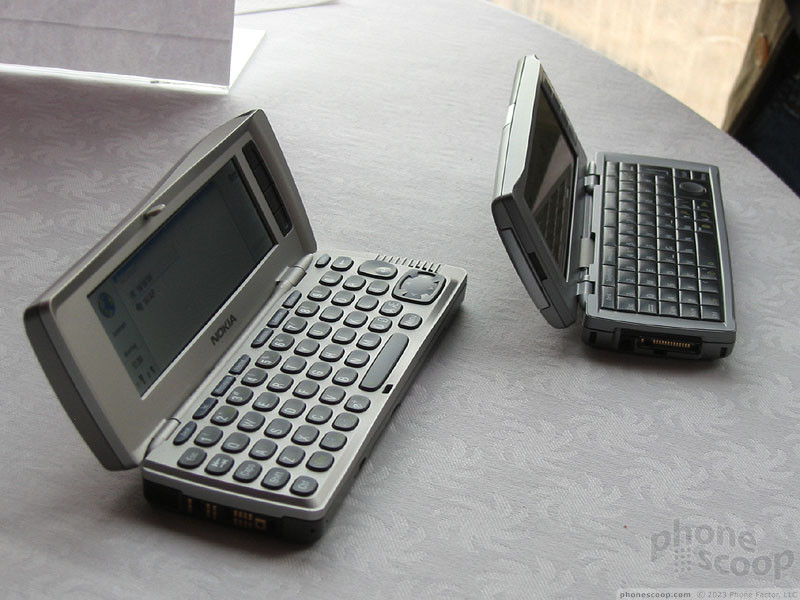




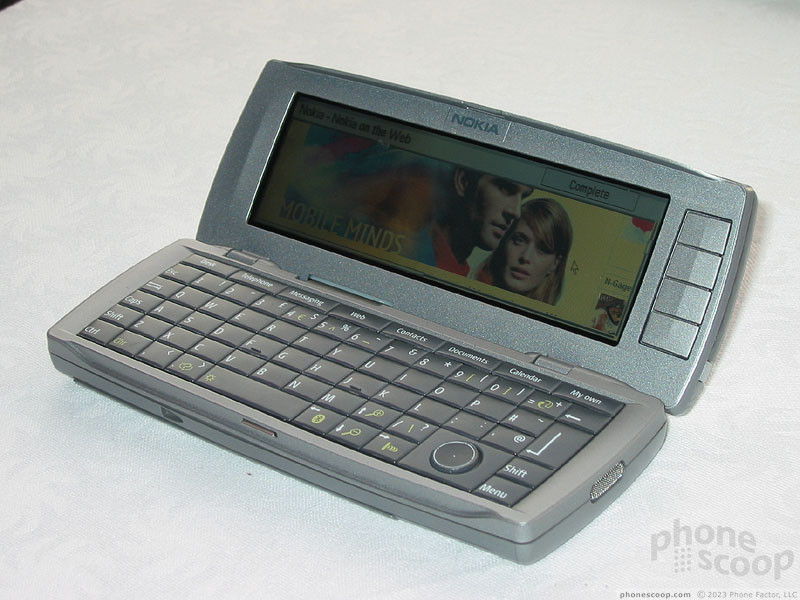








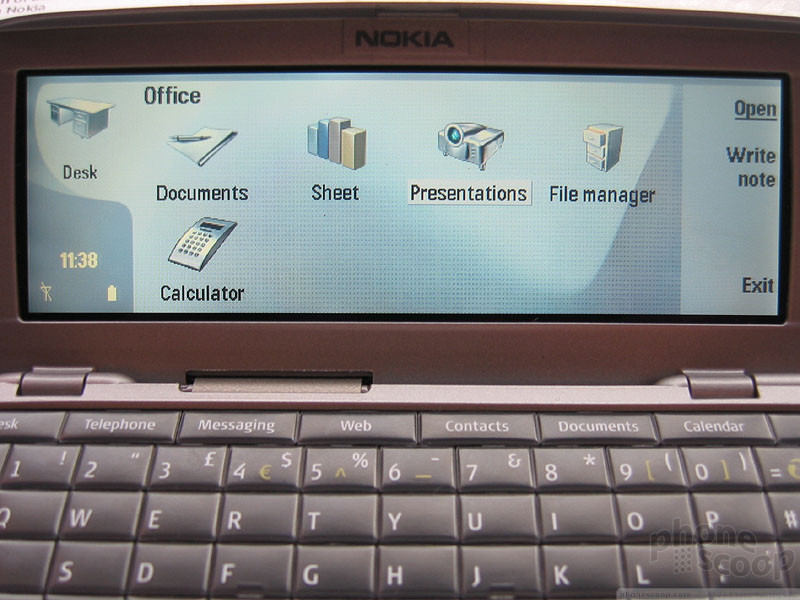

















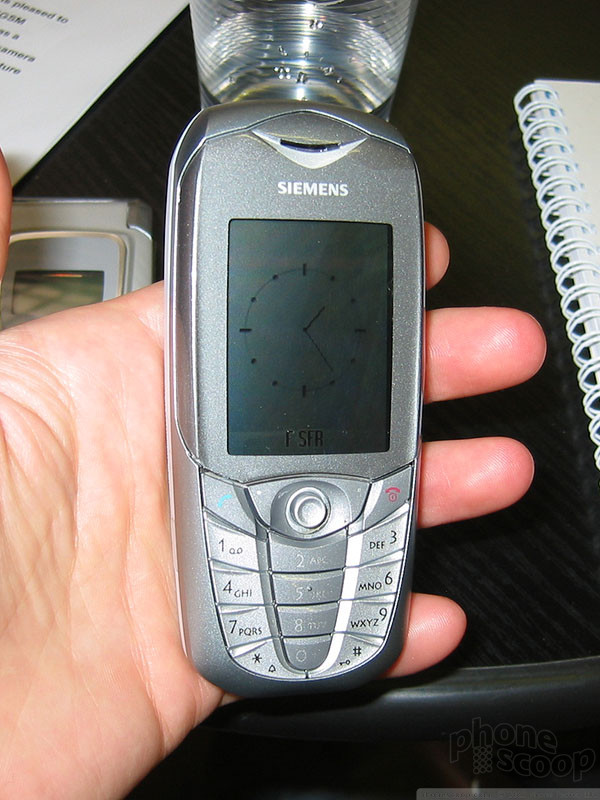




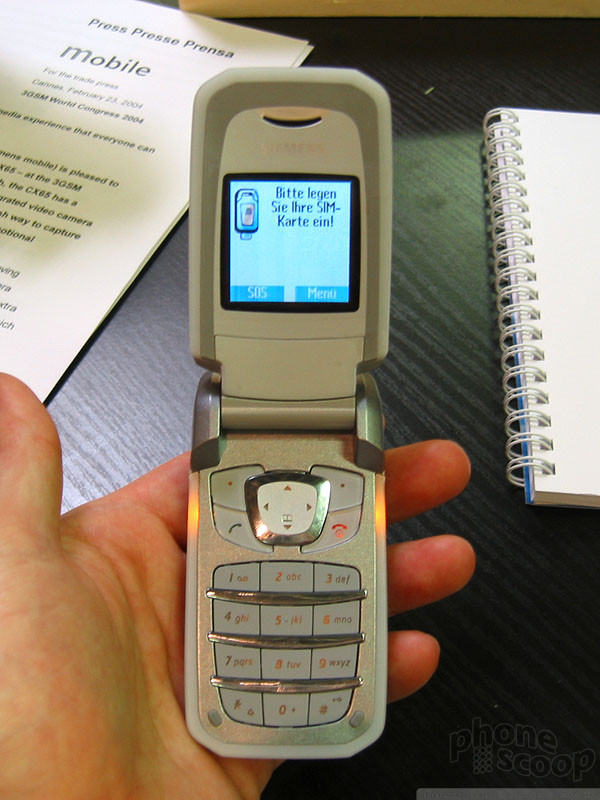





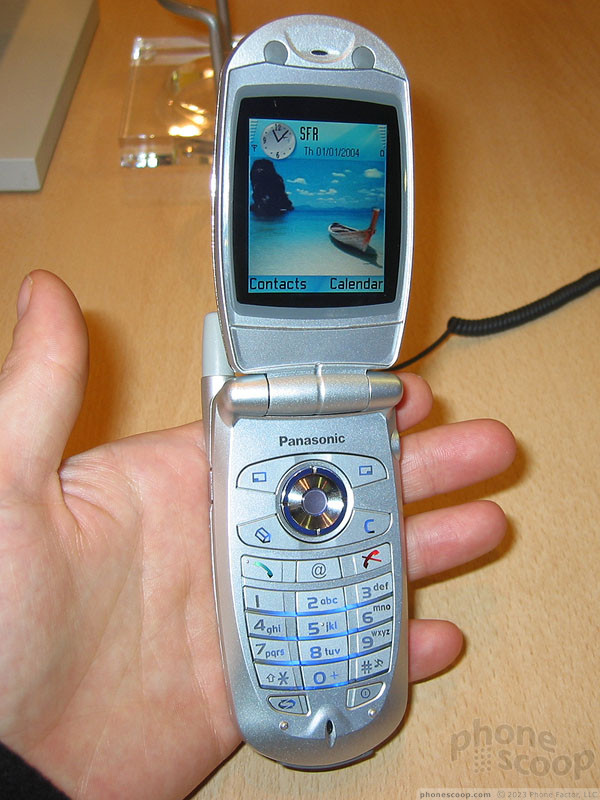













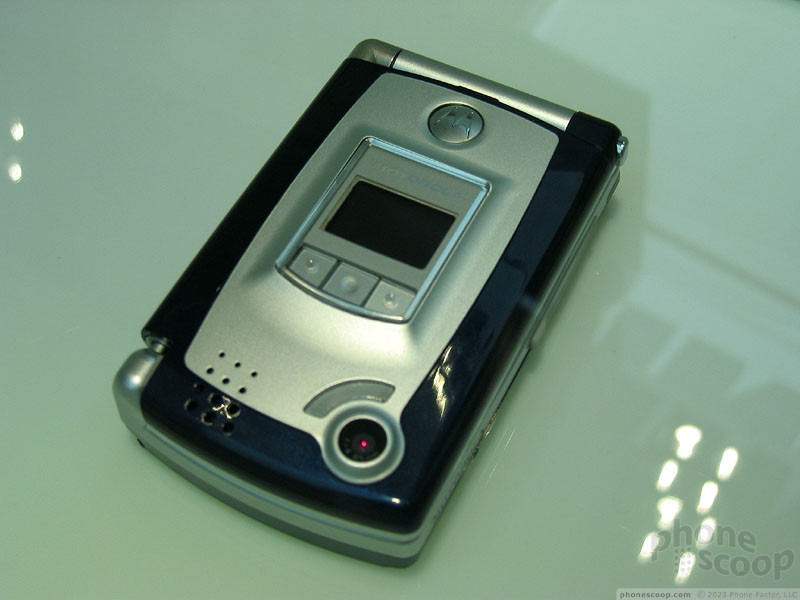







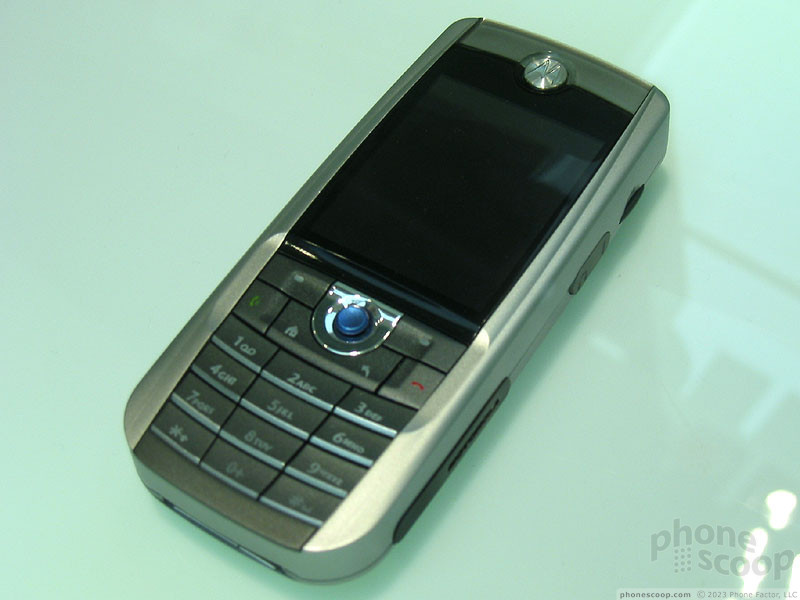



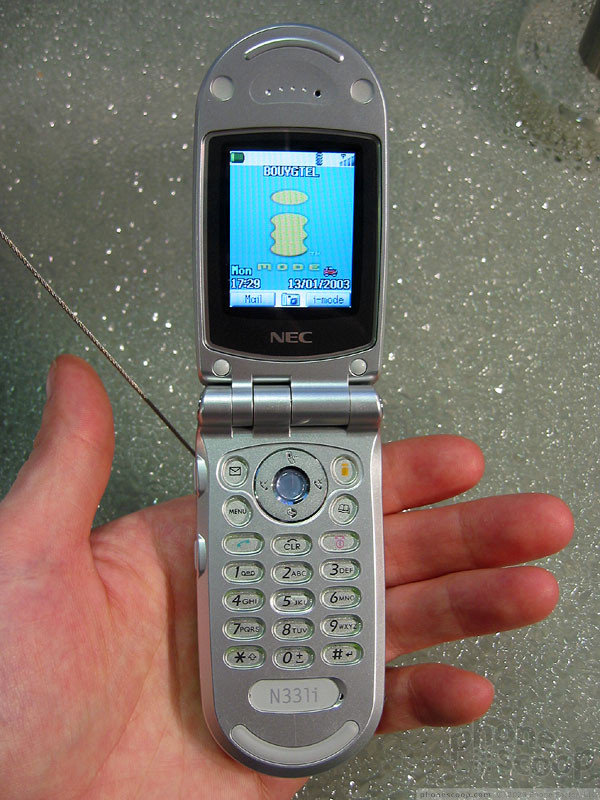














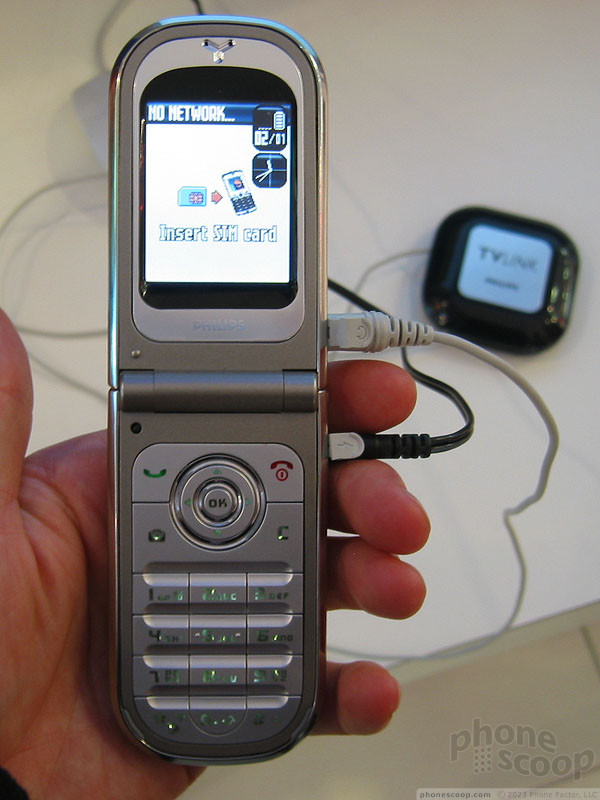






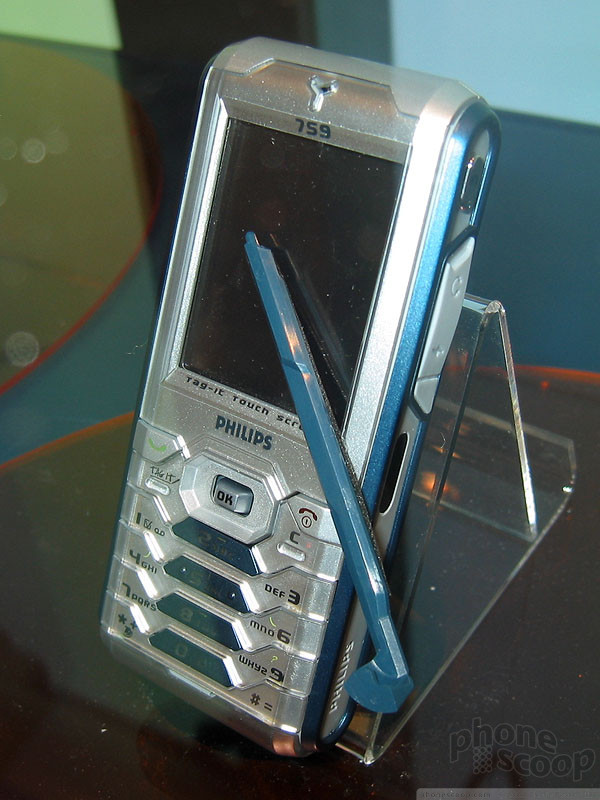





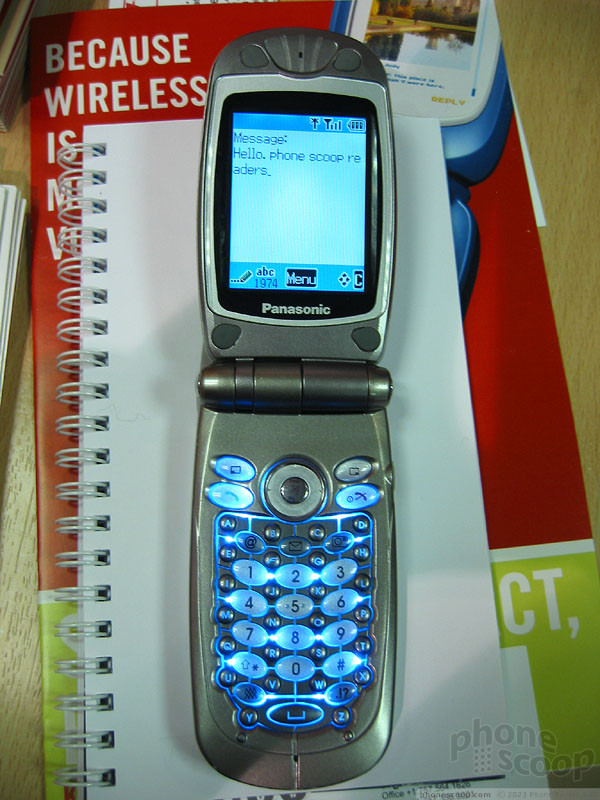




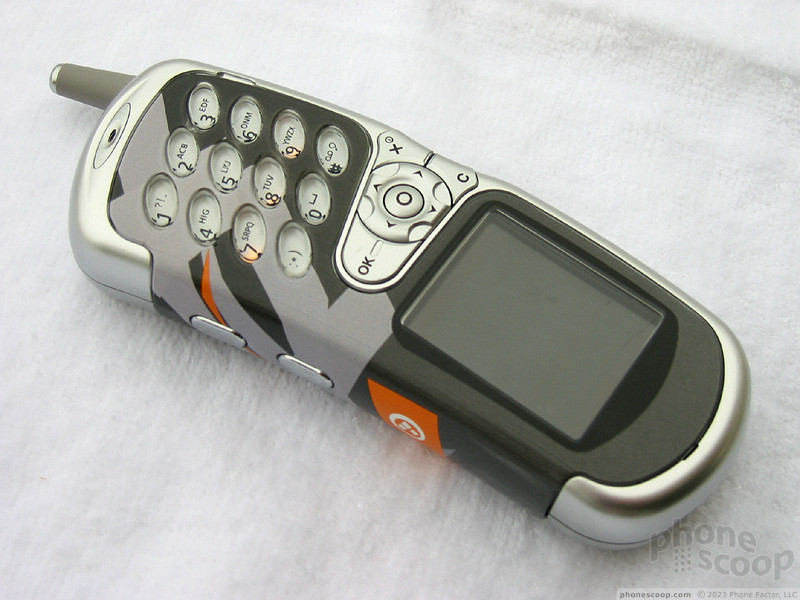








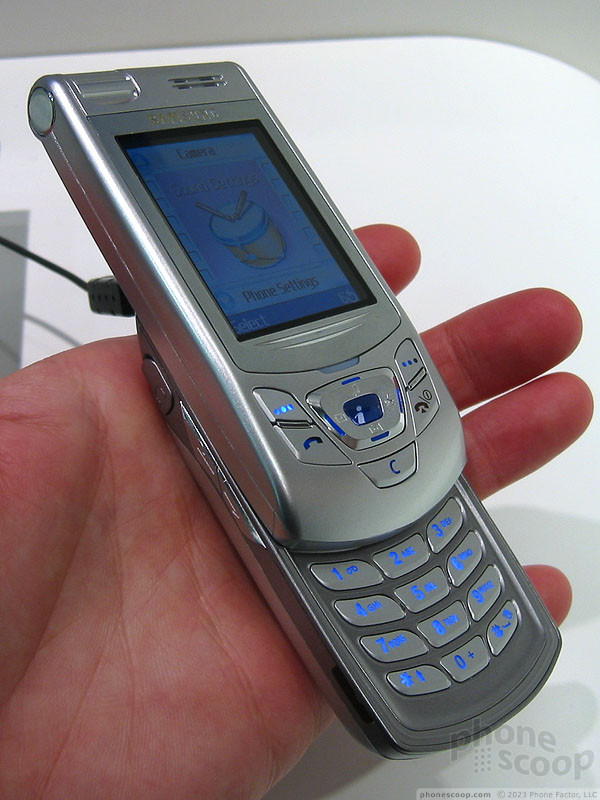








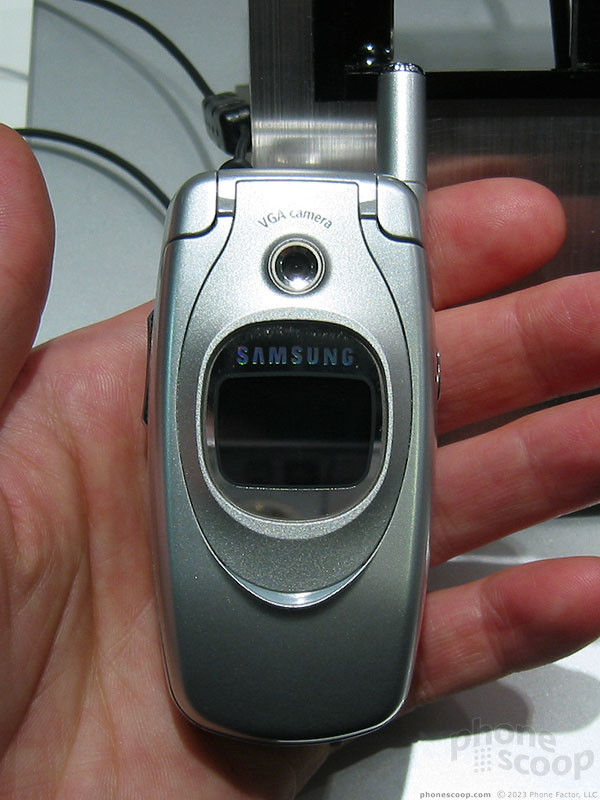


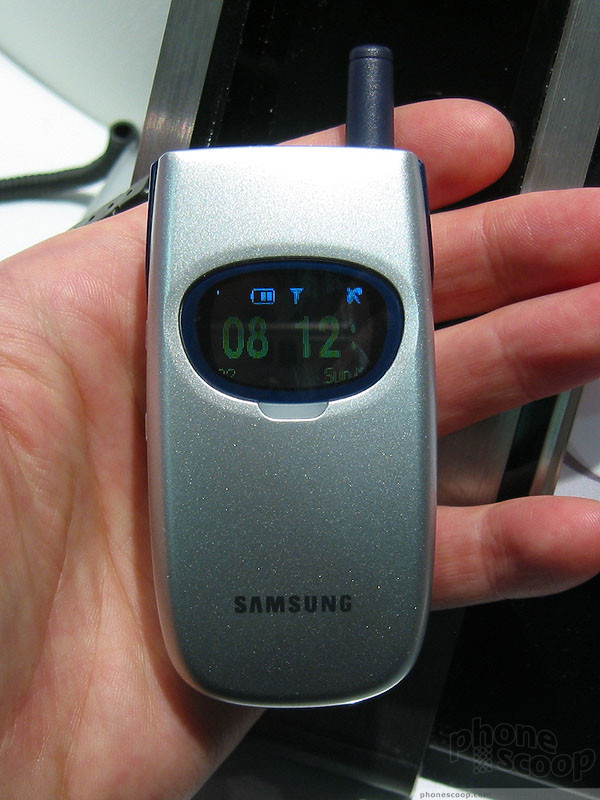




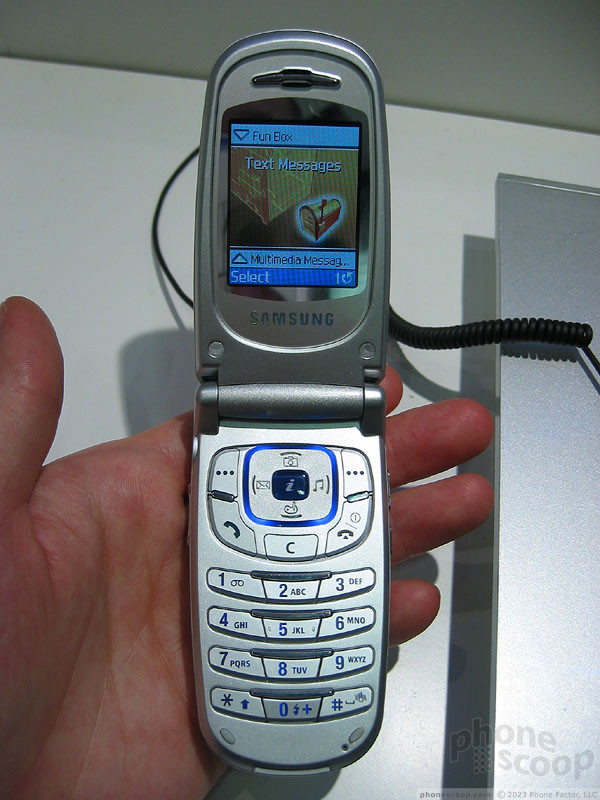





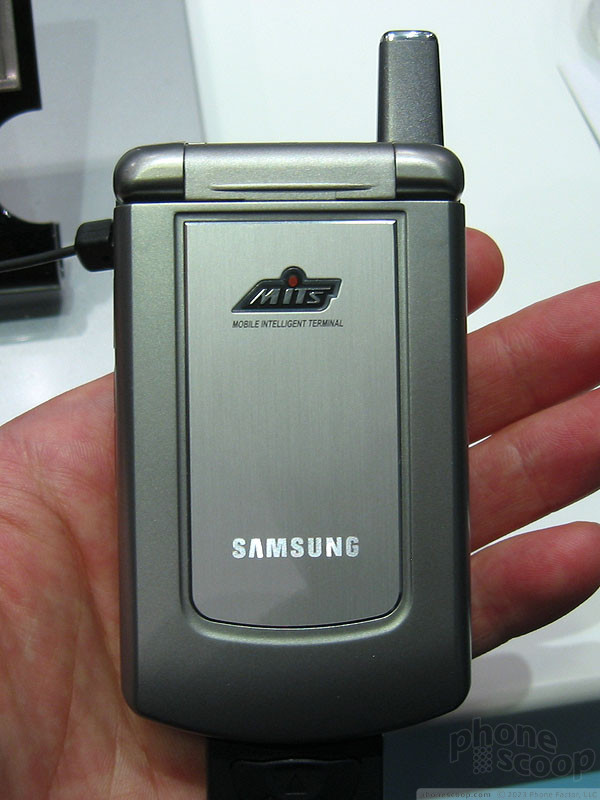









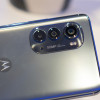 Hands On with the Motorola edge (2022)
Hands On with the Motorola edge (2022)
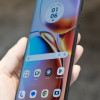 Hands On with the Motorola edge+ (2023)
Hands On with the Motorola edge+ (2023)
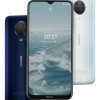 Nokia Brings New G Series to US
Nokia Brings New G Series to US
 Samsung SGH-D415 / SGH-D410
Samsung SGH-D415 / SGH-D410
 Samsung SGH-i500 / SGH-i505
Samsung SGH-i500 / SGH-i505
 Siemens CF63 / CF62
Siemens CF63 / CF62

